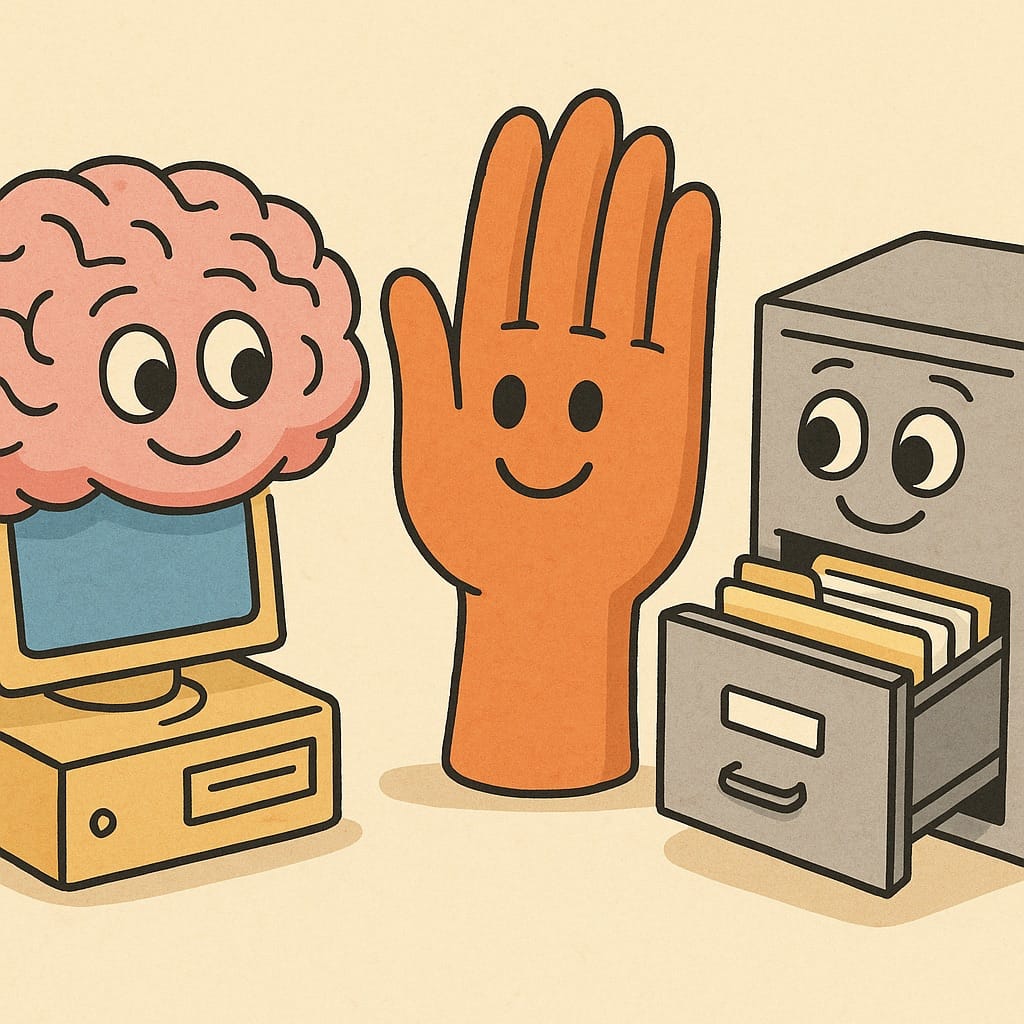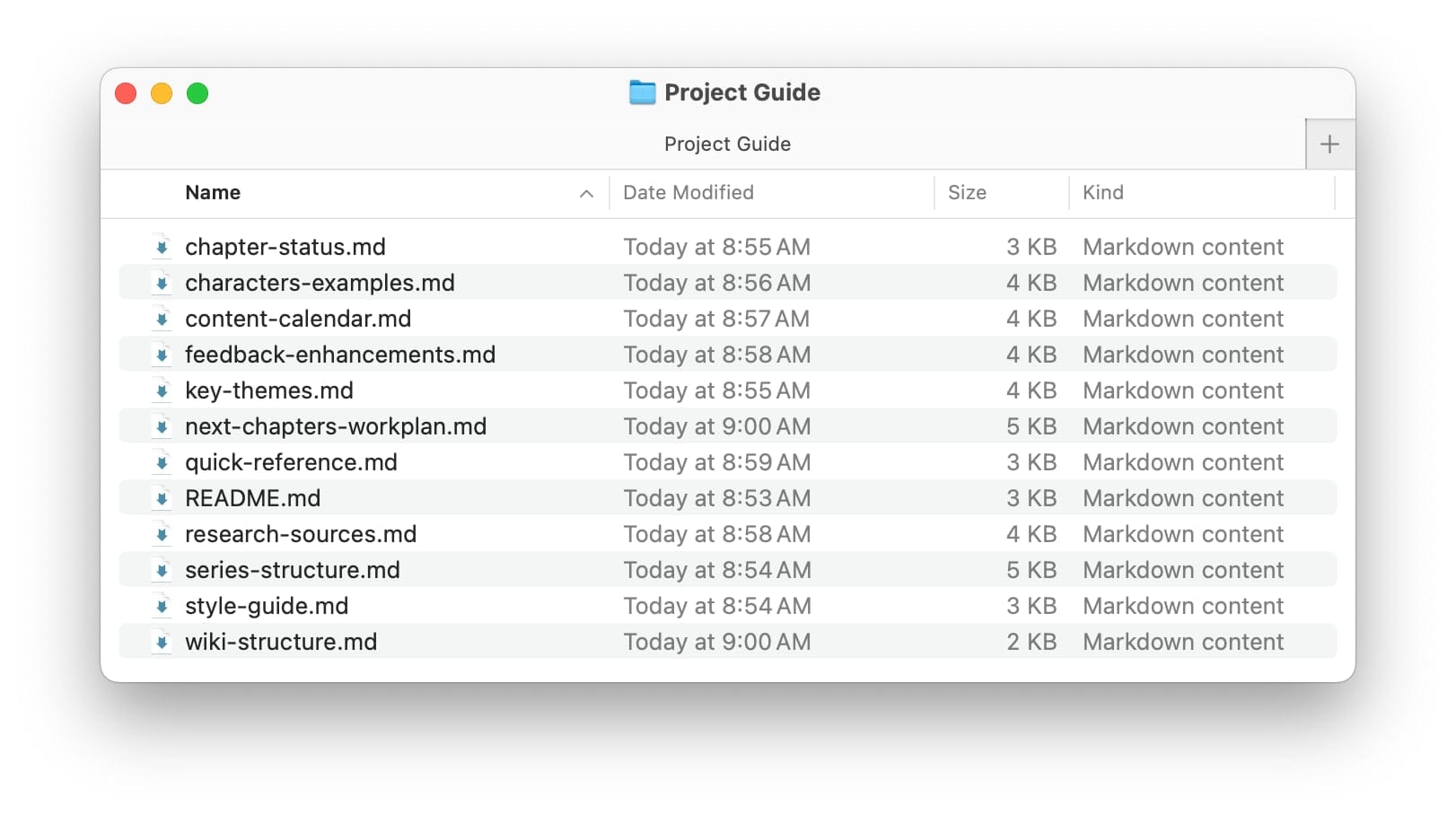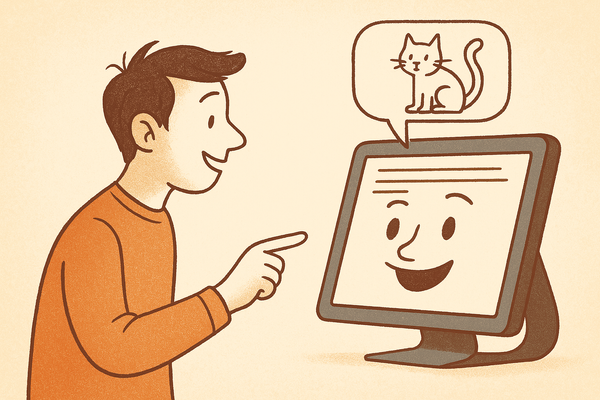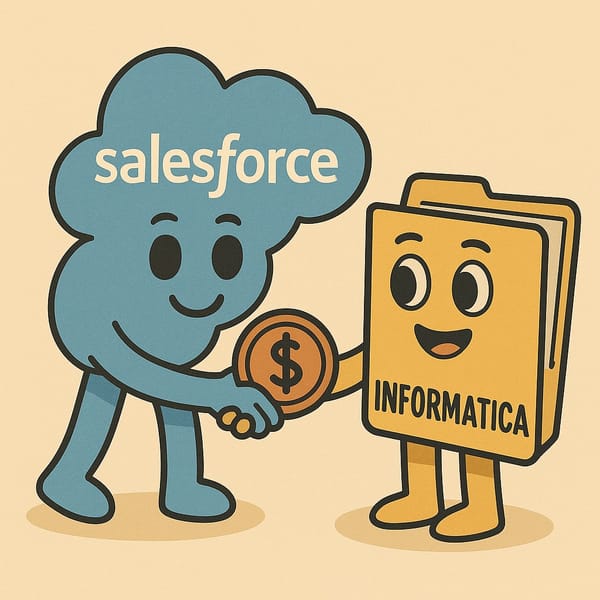How You Can Go Agentic Today
You are just minutes away from having an AI agent that will do research and maintain a wiki of notes on your desktop. Stop what you're doing—take a few minutes to follow this guide and you'll save at least an hour before the day is over.

Remember when the most futuristic thing your computer could do was automatically download email? Now we're casually setting up AI assistants that can manage our files, conduct research, and organize our digital lives. The future arrived so gradually that we barely noticed—until suddenly your laptop can think.
But here's the thing most people don't realize: you can skip the waiting and set up your own AI agent today. Not a chatbot that pretends to be helpful. Not another SaaS tool that promises the moon. An actual AI agent that can work with your files, take notes, and handle the tedious digital housekeeping that eats up your day.
Yesterday, Anthropic released Claude 4. This portion jumped out at me immediately:
New model capabilities: Both models can use tools in parallel, follow instructions more precisely, and—when given access to local files by developers—demonstrate significantly improved memory capabilities, extracting and saving key facts to maintain continuity and build tacit knowledge over time.
This is a mic drop moment.
Forget the "by developers" bit. We're gonna do this now. The trick is using the Model Context Protocol (MCP) support in Claude Desktop "developer" settings to connect to your computer's file system. It's like giving your AI assistant hands instead of just a voice. Here's what we're actually talking about:


The Promise: From Chat to Action
Most AI interactions feel like sophisticated conversations with a knowledgeable but powerless friend. You can ask Claude to write a business plan, but then you have to copy-paste it into a document yourself. You can request a data analysis, but you have to manually feed it the spreadsheet. It's like having a brilliant research assistant who's stuck behind glass.
MCP breaks that glass. Once configured, Claude doesn't just talk about your files—it works with them directly. It can read your documents, update your notes, organize your research, and maintain living wikis that evolve with your projects. The local Filesystem MCP server "transforms Claude from a conversational AI into a practical tool for everyday computing tasks" by enabling direct file system interaction.
This isn't theoretical. People are using MCP-enabled Claude to:
- Automatically organize messy download folders
- Maintain research databases that update themselves
- Create living documentation that stays current with project changes
- Build personal knowledge systems that actually work
The difference is profound. Instead of using Claude, you're working with Claude.
What We're Actually Doing
The technical explanation is simple: we're configuring Claude Desktop to run a filesystem server that gives it secure access to specified folders on your computer. This configuration "tells Claude for Desktop which MCP servers to start up every time you start the application" and enables capabilities like reading files, writing content, and organizing directories through natural language commands.
The practical explanation is more interesting: we're giving Claude the ability to be proactive about your digital life. Think of it as upgrading from a consultant who gives advice to a chief of staff who takes action.
The Setup: Choose Your Path
You have two main approaches: the NPM method (simpler) or the Docker method (more isolated). Both accomplish the same goal, but Docker provides better security isolation if you're concerned about permissions.
Method 1: The NPM Approach
Step 1: Check if you have Node.js Open your command line and type:
node --versionIf you get a version number, you're set. If not, download Node.js from nodejs.org and install it.
Step 2: Configure Claude Desktop
Open Claude Desktop and access Settings (not the in-app settings, but the application menu settings). Navigate to Developer → Edit Config.

This opens a file called claude_desktop_config.json. Replace its contents with:
{
"mcpServers": {
"filesystem": {
"command": "npx",
"args": [
"-y",
"@modelcontextprotocol/server-filesystem",
"/Users/yourusername/Desktop",
"/Users/yourusername/Documents"
]
}
}
}Important: Replace /Users/yourusername/ with your actual user path. On Windows, use paths like C:\\Users\\yourusername\\Desktop. Be specific about which folders you want Claude to access—this is about security as much as functionality.
Step 3: Restart Claude Desktop
Close and reopen Claude Desktop completely. After restarting, you should see a hammer icon in the bottom corner of the input box. Click it to see the available filesystem tools.
Method 2: The Docker Approach
If you prefer more isolation (or if the NPM method gives you trouble), Docker provides a cleaner setup:
Step 1: Get Docker Desktop Download Docker Desktop if you don't have it.
Step 2: Configure with Docker Use this configuration in your claude_desktop_config.json change /Users/yourusername/Desktop to the path you want to use):
{
"mcpServers": {
"filesystem": {
"command": "docker",
"args": [
"run",
"-i",
"--rm",
"--mount", "type=bind,src=/Users/yourusername/Desktop,dst=/projects/Desktop",
"--mount", "type=bind,src=/Users/yourusername/Documents,dst=/projects/Documents",
"mcp/filesystem",
"/projects"
]
}
}
}This approach sandboxes the filesystem access within Docker containers, providing an additional security layer.
First Contact: Testing Your Setup

Once restarted, you should see "filesystem" appear in your tool selector. Try asking Claude something like:
"Can you show me what's in my Desktop folder and help me organize any loose files?"
If everything worked, Claude will actually look at your files and provide specific, actionable suggestions. This moment—when Claude mentions your actual files by name—is when the difference becomes visceral. You're no longer talking about your work. You're talking with someone who can see and modify your work.
The Cultural Shift
There's something profound happening here that goes beyond the technical setup. We're witnessing the end of the "air gap" between AI and our actual work environment.
For decades, our relationship with computers has been mediated by interfaces designed around human limitations. We click, drag, copy, and paste because those actions translate our intentions into something computers can execute. But AI agents don't need these translation layers. They can work directly with intentions expressed in natural language.
This represents "a significant advancement in how we interact with AI assistants" by "bridging the gap between Claude's language capabilities and your file system". The result isn't just more efficient—it's qualitatively different.

Practical Magic: What This Actually Enables
Once you have MCP running, the possibilities expand quickly:
- Intelligent File Organization "Claude, I have 500 files in my Downloads folder. Can you sort them into appropriate subdirectories based on content and type?"
- Living Documentation "Keep a running summary of all the research papers I save to my Research folder, and update the summary whenever I add new files."
- Project Memory "Look at all the files related to the Henderson project and tell me what I should focus on this week based on what's been completed and what's outstanding."
- Content Creation Workflows "Create a new blog post outline in my Writing folder, then draft the introduction based on the research files I have on this topic."
The key insight is that Claude becomes contextually aware of your actual work, not just your descriptions of your work.
Troubleshooting: When Things Don't Work
No hammer icon? Ensure you've completely restarted Claude Desktop and check that your JSON syntax is valid. Use a JSON validator if you're unsure.
Connection errors? Try running the server manually to see error messages:
npx -y @modelcontextprotocol/server-filesystem /Users/yourusername/DesktopWindows-specific issues? Windows users often need to use absolute paths and may need to run commands as administrator. The paths should use double backslashes: C:\\Users\\username\\Desktop.
Permission problems? Make sure the specified directories exist and that your user account has read/write access to them.
The Bigger Picture: Infrastructure for Intention
What you're setting up isn't just a clever trick—it's early infrastructure for a different kind of computing environment. One where the interface layer gradually disappears, replaced by systems that understand and act on intentions rather than requiring explicit instructions.
This is how the future arrives: not through grand announcements but through small improvements that suddenly add up to something transformative. MCP servers represent "a significant advancement in how we interact with AI assistants" by enabling "natural language interaction with your files and directories".
The smartphone didn't replace computers by being a smaller computer—it replaced them by being a different kind of computer entirely. Similarly, AI agents won't replace our current software by being smarter versions of existing apps—they'll replace them by making the concept of "apps" increasingly irrelevant.
Your Next Hour
Here's the thing about exponential change: the difference between early adoption and late adoption isn't linear—it's dramatic. The people setting up MCP today aren't just getting a head start on a useful tool. They're developing fluency with interaction patterns that will soon become the default way we work with computers.
So stop reading and start configuring. Your future self will thank you for the hour you invest today. And once you see Claude actually working with your files rather than just talking about them, you'll understand why this feels less like using a tool and more like working with a particularly capable colleague.
The age of truly useful machines isn't coming—it's here. You just need to introduce yourself.




